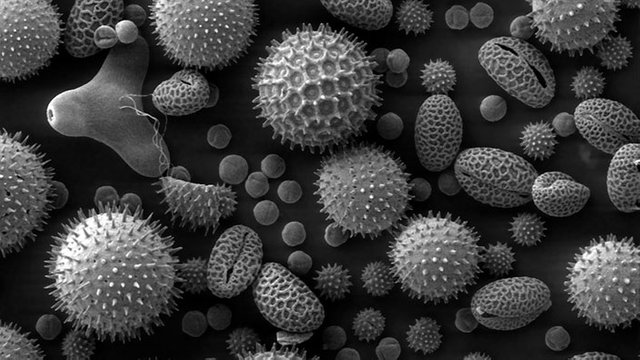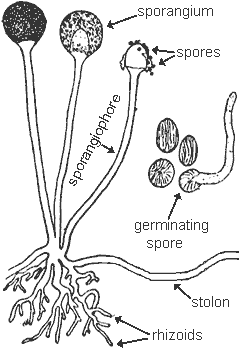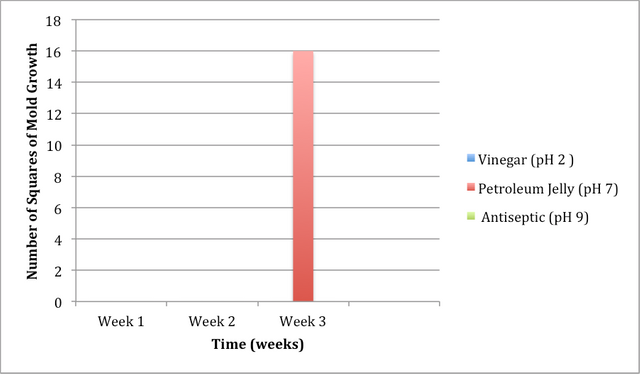Mold Spore Production in Varying pH Levels
Bread mold, also known as Neospara crassa, is a type of fungi and a eukaryotic organism, in that eukaryotes do not self-produce nutrients but take in nutrients from the surroundings. Mold has the ability to grow in various conditions and is susceptible to growing on preservative free breads.

The measurement of how acidic, neutral or basic a substance is has to do with pH levels. Fungi can grow in various pH levels, however oxygen would need to be present in the process. Increased mold growth has typically been seen in pH levels. The pH levels below 7 generally have had increased mold growth.
In the International Journal of Food Microbiology, a study was done to examine
mold growth on bakery product spoilage and partly look into the affects of pH on the bread. The pH was observed to identify if there was a lag time in mold production or a radical growth of mold. The experiment observed that a certain mold had an affect when the pH ranged from 3-8 though the other 2 types of mold were not affected (Dagnas, 2014).
Eight slices of bread were used with three different variables and a control to test the effect of different pH levels for mold growth on the bread for this experiment. The three experimental groups that were used on different pieces of bread were Petroleum jelly, hand sanitizer (antiseptic), and vinegar. The control of this experiment was plain bread without any substance added to it. Petroleum jelly had a pH of 7. The antiseptic had a pH of 9, making it slightly more basic. The vinegar had a pH of 2, making it more acidic.

Two plain slices of Chabaso brand bread were placed into two separate Ziploc bags and sealed up. Using petroleum jelly, 1.1 g was spread evenly on only one side of a new slice of bread. The same amount of petroleum jelly was measured and spread on a different slice of bread. Both slices were then placed in separately sealed Ziploc bags. With the next experimental group being antiseptic, 0.65 g was measured and evenly spread to two new slices of bread. Both slices were placed into two separate Ziploc bags and sealed. The last experimental group was vinegar. Two slices of bread were evenly coated on one side with 3 mL of vinegar each. Then both bags were placed in separately sealed Ziploc bags. All bags were kept in a room temperature environment and in the dark.

Figure 1. Shows mold growth occurrence over a 3-week period at pH 2, 7 and 9. The first 2 weeks were observed to have no sightings of mold growth. Week 3 was the only occurrence of mold growth detected on the bread with the substance having a pH of 7. The control variable, which was the plain bread, did not have mold growth throughout the experiment.
The finding that Petroleum Jelly with a pH of 7 had an increase of mold growth was supported by the experiment brought out in the International Journal of Food Microbiology. The pH level done in this experiment was within the range that would affect mold growth, being a pH level of 3-8. Vinegar (pH 2) and the antiseptic (pH 9) were out of the range for mold to have an affect.

Food regulation is becoming more prevalent today. Researching what pH bread mold does not thrive in can impact the bread packing industry, essentially discouraging the production of mold. This, in return, can increase shelf life.
Upvoted
Mold spores thrive in an alkaline environment. This fact is what makes mold often so hard to control; they are most prevalent in kitchens, bathrooms, and other damp areas. If you're dealing with a significant amount of mold in your home, then you already know how important it is to properly control the pH levels of your home. Also, you check this Concrete Layers south auckland and get more new skills for roof cutters. The problem is that most people don't even know what an optimal pH level for their home needs to be.
Nice @kajalpats
Shot you an Upvote :)
Keep up the great work @kajalpats
Upvoted